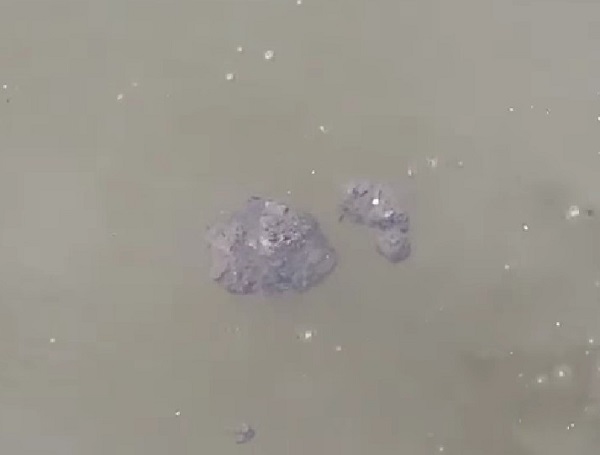UPDATE: A Health Alert has been issued advising residents to avoid contact with the water in the Back River.
Original story below…
——
ESSEX, MD—The Maryland Department of the Environment has issued a statement indicating that it has has begun to take steps toward improving operations at the Back River Wastewater Treatment Plant after solid materials were spotted floating in the waters of the Back River this week.
The Back River Restoration Committee, based in Essex, says it is currently not safe to come into contact with water in the Back River and uploaded video of solid materials seen floating in the water (see video below).
In the wake of last summer’s news coverage highlighting massive illegal releases of partly treated sewage and serious operational failures at Baltimore’s two treatment plants, the city was already facing lawsuits filed by the state and by Blue Water Baltimore.
The environmental watchdog group has been working for the past two months with the city and the Maryland Department of the Environment (MDE) to craft a consent decree to bring the polluting plants into compliance, according to Baltimore Brew.
FOX 45 reports that the Back River Restoration Committee took water samples near the Back River Wastewater Treatment Plant’s effluent pipe Tuesday morning after seeing concerning water conditions.
After sending the samples to Blue WAter Baltimore, BRRC says the results showed an enterococcus bacteria level of 24,196MPN/100mL.
BRRC says, according to the State of Maryland, the water quality threshold for enterococcus is 130 MPN/100mL.
The Department of Public Works maintains that the material found in the water is now raw sewage.
“The Department of Public Works (DPW) maintains that the continuous characterization of discharges from the Back River Wastewater Treatment Plant as untreated wastewater is absolutely not factual,” DPW said in a statement this week. “The Maryland Department of the Environment (MDE) examined a sample of solid waste materials observed earlier this week (April 14) in Back River. MDE’s analysis indicated that this was NOT raw sewage. The sample of solid waste material collected this week appears similar to the sample MDE received from Blue Water Baltimore on March 23. The microscopic analysis of the March 23 sample showed no life visible (i.e., bacteria, fungi, protozoan, rotifers, and nematodes), indicating there were no undigested byproducts. The strong odor in both samples was similar to nutrient-rich oxygen-depleted marsh mud.”
On Friday, the Maryland Department of the Environment issued the following statement:
“The Maryland Environmental Service, as directed by the Maryland Department of the Environment (MDE), has begun to take steps toward improving operations at the Back River Wastewater Treatment Plant. Despite MDE taking action every step of the way since June of last year to see that conditions improved at the plant, when the directive was issued March 27 plant operations were in a state of precipitous decline. MDE’s expectation is for operations to improve under the Maryland Environmental Service’s temporary operation of the facility. MES will stay in place as long as necessary, working with Baltimore City, to achieve our objective to bring this plant into compliance.
“MDE is aware of concerns about solid materials observed in Back River earlier this week. When there were reports of floating clumps of material last month our finding was that there were floating mats of filamentous algae in the Back River. That finding was supported by an examination of a sample we obtained then. We examined a sample of the material observed this week. MDE’s analysis indicates this is NOT raw sewage.”
The full statement from MDE can be viewed on Facebook here.
Do you value local journalism? Support NottinghamMD.com today.

